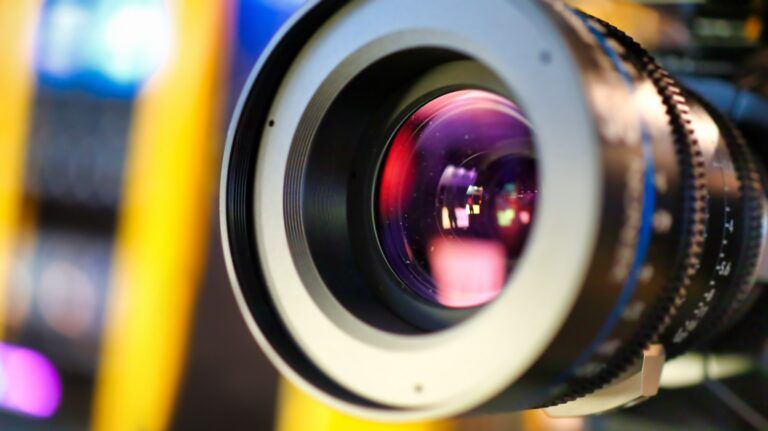


Malaga, November 17
The 4K HDR Summit in Malaga has once again put on the table the future of 8K and its booming bet in China, where they consider 8 as the lucky number, confident that it will bring them fortune and prosperity also in the world of Ultra High Definition (UHD).
Olivier Chiabodo, CEO of the French-Swiss production company The Explorers, which has been making an inventory of the Earth’s natural beauties in Ultra High Definition (UHD) for a decade and whose platform has more than 20 million subscribers, said at the 4K HDR Summit held this week in Malaga that “China’s commitment to 8K is firm and they want to lead it worldwide.”
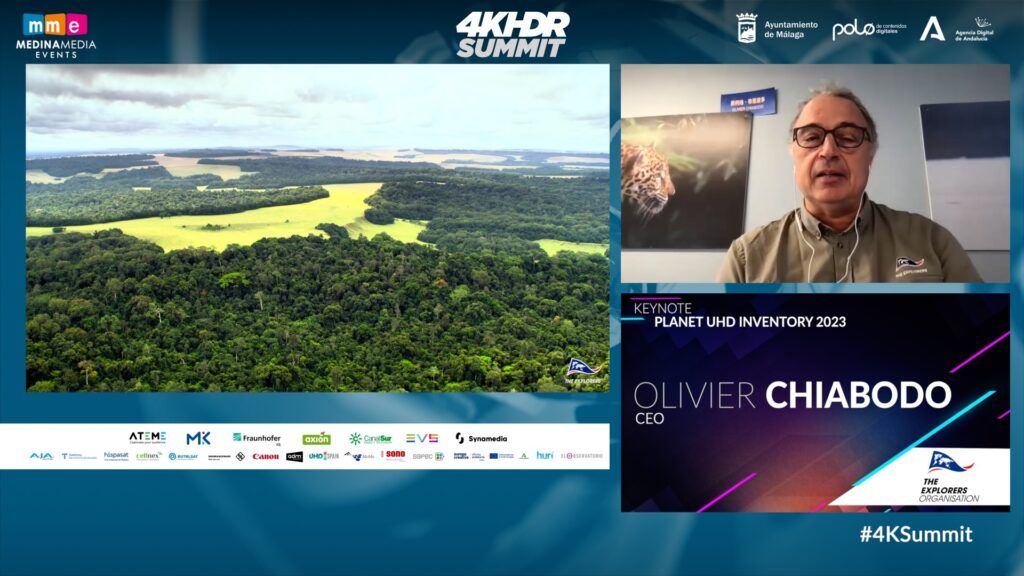
“China’s CCTV is going to broadcast the Paris 2024 Olympics in 8K because they know that people in China have 8K TVs and Chinese cities have big screens that can broadcast this image quality,” reports Chiabodo, who is a medical doctor by training and who achieved great popularity in France as a prime-time TV show host, and is now dedicated to producing high-quality documentaries.
With an optimistic view on the medium-term future of 8K, Chiabodo has extolled the Chinese market in the industry as offering endless opportunities on a technical level. “8K will be the standard for high-end productions,” he has sentenced. “It will be complicated and it will take time, but it will come. And even if it’s broadcast in 4K, everything will be shot in 8K.”
The 8K to record, and the 4K HDR to issue
For his part, Mike Fidler, executive director of the 8K Association, has offered an overview of this emerging technology that has “focused on large entertainment enthusiasts” as the main recipients, because “they are the most interested in acquiring content in 8K”. In this sense, Fidler has detailed how complicated it is for the moment to continue advancing with this technology that has many challenges ahead, mainly in “native content”.
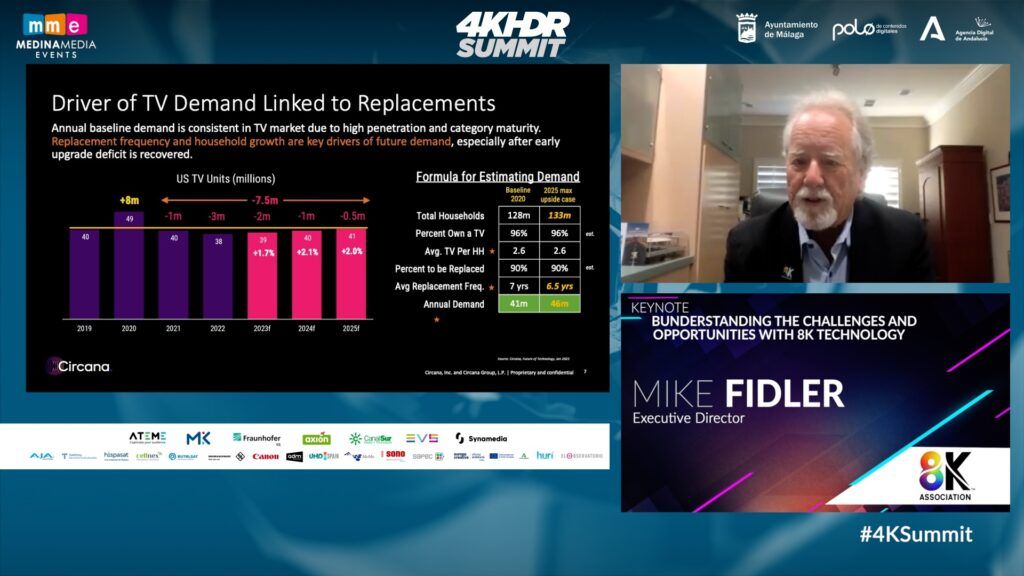
“We are in the dilemma of the chicken and the egg, what came before?”, Fidler questions, who makes a simile with the situation with 8K. “Until we have devices on the market with economic viability, it will not be feasible to create content,” he has argued, while stressing the problem arising from “the new legislation in Europe in March 2023, which requires the same power requirements in 8K as in 4K.”
“At the moment, the manufacturers that are putting out 8K have found the formula: setting their TVs to lower power by default. It doesn’t give the highest level of quality, but the user has the opportunity to manually push the performance of their TV to the maximum. We want to strike a good middle ground between respecting the environment and offering the latest technology.”
The revolutionary ‘filmmaker mode
Michael Hoog, chairman of the UHD Alliance’s advocacy group, discussed the close relationship between TV manufacturers and content creators who have been working hard in recent times to make a novel feature on TVs a reality: film maker mode.
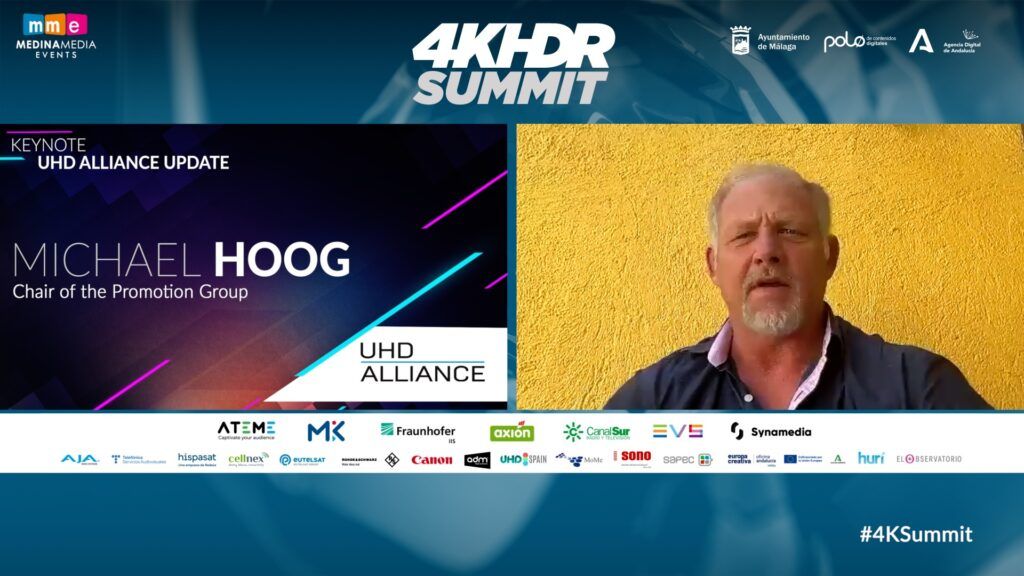
“This film maker mode for televisions is wonderful because what you do is recreate in your living room the image quality that the director wanted to put in the editing room,” describes Hoog, who stressed that “without the settings of the television, these creations of the director are lost,” hence the importance of collaboration between manufacturers and creators.
A function that is already available to some of the major video and streaming platforms, but which will increase in a very short time with the aim of “keeping the creative intent of filmmakers in the home. That is, “that the decisions made in the editing room are kept in the home” and the content can be enjoyed in all its splendor. Even more so today, because “thanks to the bandwidth, the experience is better, so it is possible to have a better image quality”.
Towards sustainable Ultra High Definition
For his part, Benjamin Schwarz, chairman of the Ultra HD Forum’s communications group, raised the issue of sustainability in Ultra High Definition and its importance for consumers.
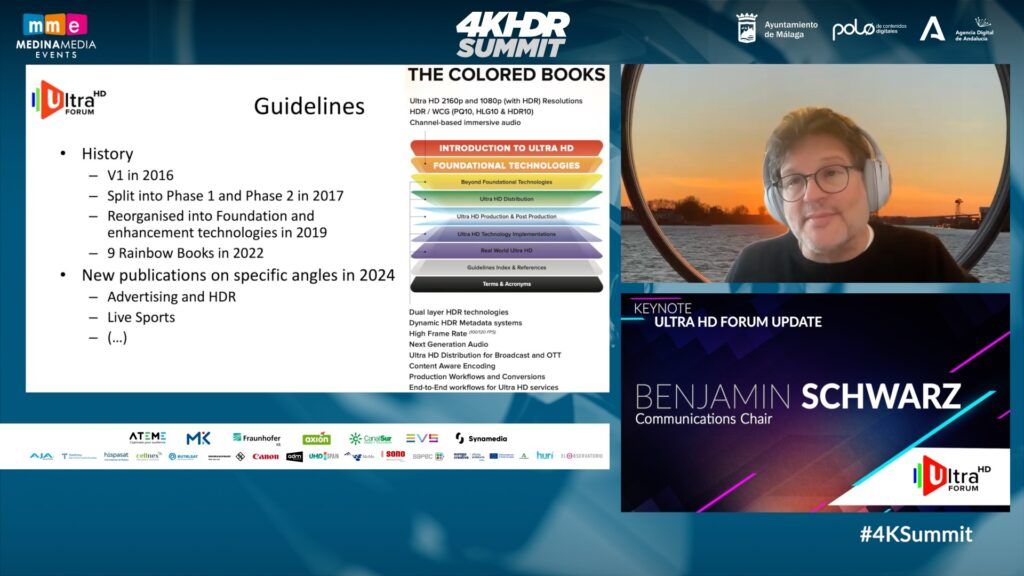
From this global forum have developed a series of “definitions on new technologies to ensure that the UHD is sustainable”. The consumption of televisions with Ultra High Definition technology is a matter of concern to the Ultra HD Forum, because according to a study conducted in France by the support agency Berec, “80% of the energy is consumed in the home, while 15% in data centers and only 5% in the network”.
Data that warns of excessive consumption by the user and, although “with HDR higher peaks are reached, there are cases that HDR consumes up to 30% less than SDR”. One of the solutions offered by Schwarz would be in the study of lighting, as it is found that “you can save up to 20% of light energy without any noticeable effect on image quality”; or in discovering why “different parts of the TV have different types of consumption”.
India bets on 4K HDR as broadcast standard
India’s reputed content creator Prashant Chothani, CEO of international travel platform and channel TravelXp, has shown his more than positive view of Ultra High Definition by assuring that “4K has become standard in the industry”.
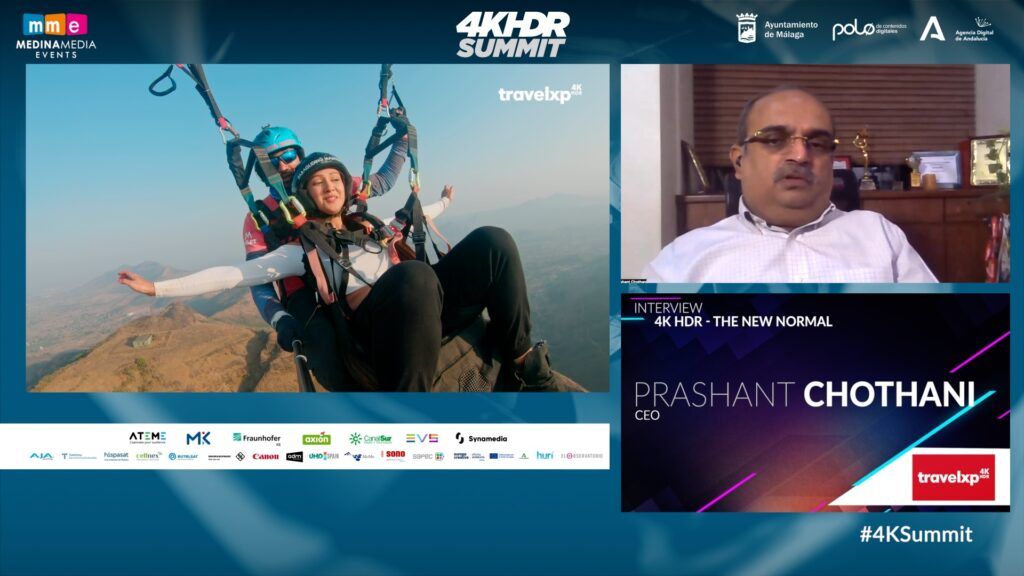
For this pioneer in the 4K HDR ecosystem, “everything by definition is 4K and there is no question about it. The consumer already wants everything 4K and it’s his choice; everything HD is already obsolete today“. So, just as he predicts a promising future for this technology, he is less so with the concept of the Metaverse, which is often associated with 4K or UHD: “The Metaverse is not going to be relevant to the content industry we are in. The future of the Metaverse is going to be the same as the future that was once predicted for 3D”.
International award to an underwater 4K documentary
The last day of the 4K HDR Summit featured a Spanish guest, Karlos Simón, CEO of KS Viajes y Expediciones, who offered a different technical point of view with his documentary ‘The four kings, the sanctuary of the sea of Halmahera’, filmed almost entirely underwater in Indonesia, “where there are always complications”.
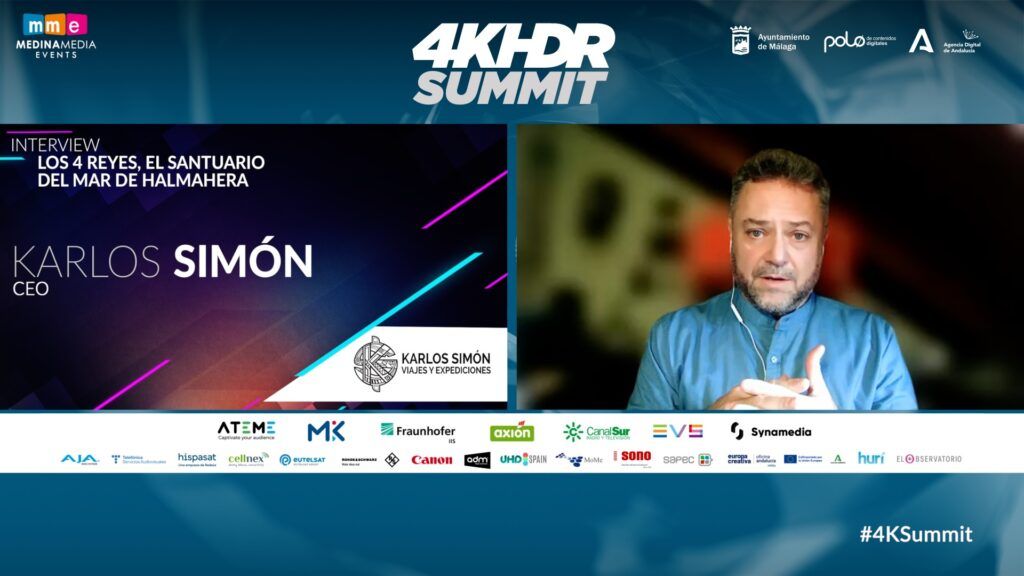
Awarded the prestigious REAL SOCIEDAD FUNDAZIOA Award and the S.M.Y ONDINA Award, with the golden flag for best documentary at the San Sebastian Festival, it will be on November 18 with the celebration of this festival when it will be possible to see for the first time a documentary that was recorded in “one of the places where there is the greatest biodiversity in the world with the possibility of seeing 300 different types of fish in a single dive”.
More 4K HDR content needed
Alessandro Capitani, senior marketing consultant at Video Progetti, shared with us the main conclusions of the Milan HDR Summit held in October of this year, which allowed us to delve into the importance of HDR, the main theme of the summit.
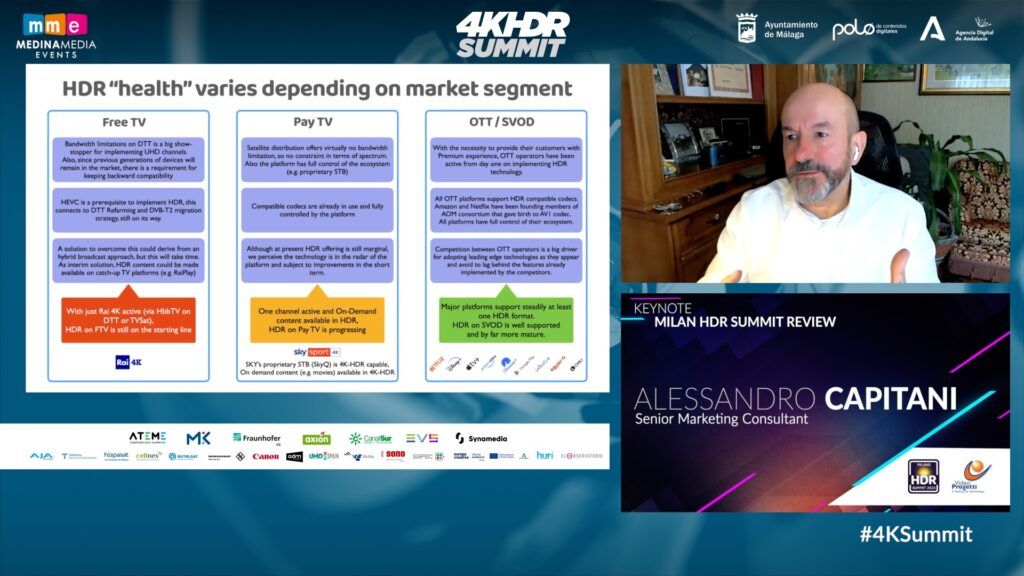
“We need to use more HDR,” is the main conclusion highlighted by Capitani. “We must have more knowledge in general of the industry, but especially what surrounds this technology. The summit provided very good information from all the speakers that hopefully has permeated all the companies that were present,” said the Italian, who concludes: “HDR is a very good value for the content, but the industry is not so aware of this issue”.
Andalusia, 4K set
The president of RTVA, Rafael Porras, has been in charge of opening this last day making a balance of the Ultra High Definition (UHD) of this 2023 that is heading to its end in which he has praised the launch of “LAND, the Cluster that was born as an example of public-private collaboration to develop business projects that make Andalusia a major reference for the audiovisual industry and digital content at national and international level” and that was precisely presented during the first day of this 4K HDR Summit, which has been developed in the Digital Content Pole of Malaga during Monday 13 and Tuesday 14 in person, and during Wednesday 15 and Thursday 16 virtually.
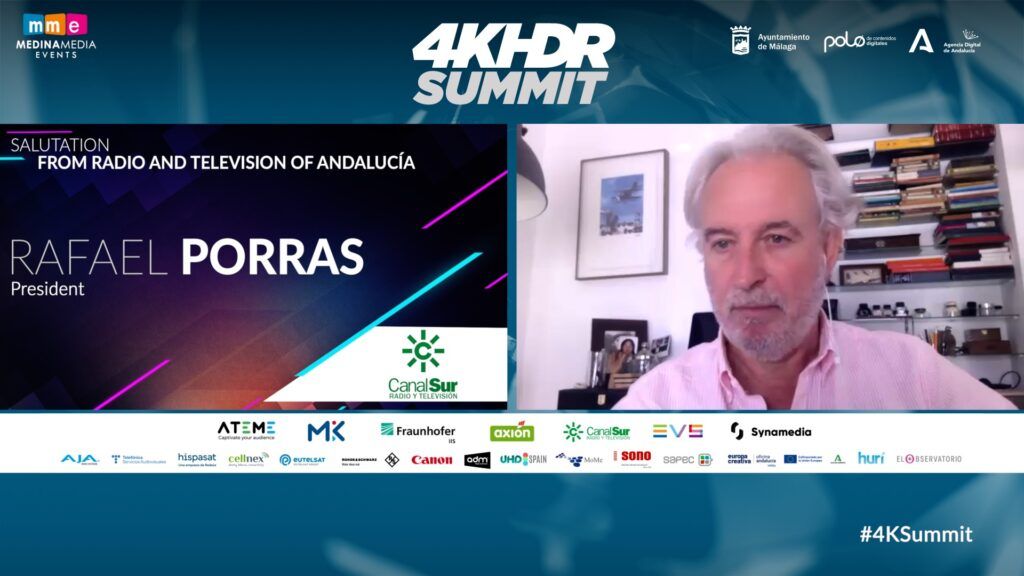
“Andalusia has become the main laboratory of Ultra High Definition in Europe and we are a meeting point for new technologies and 4K content producers around the world,” said Porras, who is proud that “the most thriving companies in Andalusia in the audiovisual industry” are committed to this LAND Cluster.
From NAPTE Global Miami, to the 4K HDR Summit 2024. And vice versa.
Finally, and as a finishing touch to the ninth edition of the 4K HDR Summit in Malaga, Cesar Diaz, buyer relations manager of NATPE Global, has offered some hints of what will be the first major convention of the year of the industry to be held on 16, 17 and 18 January 2024 in Miami.
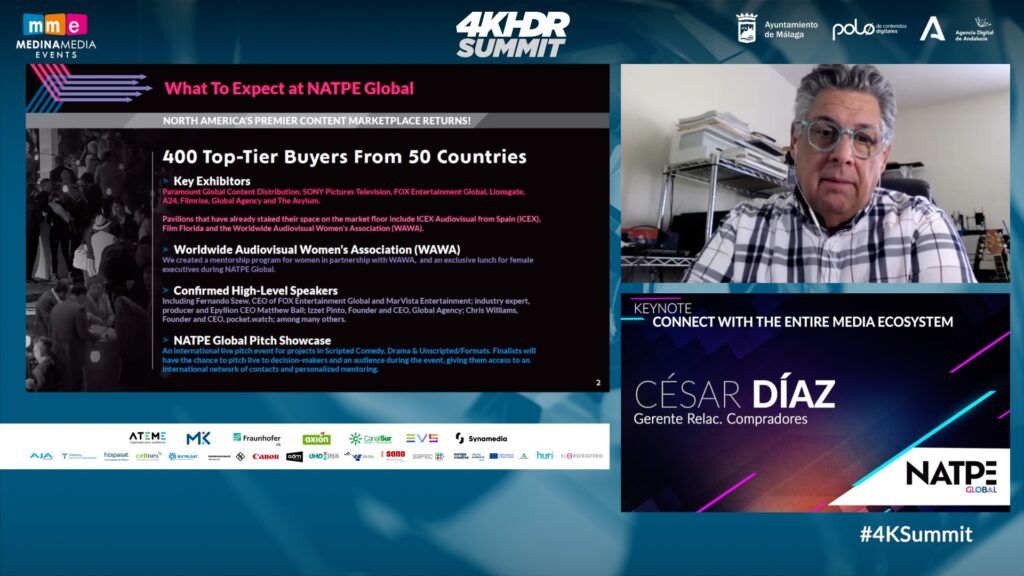
NAPTE Global Miami will be the perfect setting to “see what’s developing and trending” in the content world. “The most important thing about our congress is that it is a must-attend event not only to get new contacts, but to learn first-hand from the great experts everything that concerns the industry.” The North American event takes the baton from the 4K HDR Summit, which in 2024 already has a date for its tenth anniversary: November 11-14, 2024.
The Observatory, 24/365 with all the latest New Tech news
The conferences of the 4K HDR Summit 2023 could be followed through ‘El Observatorio’, from Medina Media Events, where you can enjoy the conferences 24/7 365 days a year, following the Netflix concept. In ‘El Observatorio’ its Headlines and News section allows you to be up to date with everything that happens around the audiovisual and technological universe. In addition, attendees can schedule video meetings with other participants and speakers on this platform.
The ninth edition of the 4K HDR Summit was supported by the Malaga City Council through the National Digital Content Pole, the Digital Agency of Andalusia, ATEME, Canal Sur Radio and Television, Axion, Fraunhofer IIS, Mediakind, Synamedia, EVS, Telefónica Servicios Audiovisuales, Grupo ADM, AJA, Hispasat, Cellnex, Eutelsat, Rohde & Schwarz, Canon, Sapec, SONO, Hurí, UHD Spain and Europa Creativa Media Desk Andalucía.